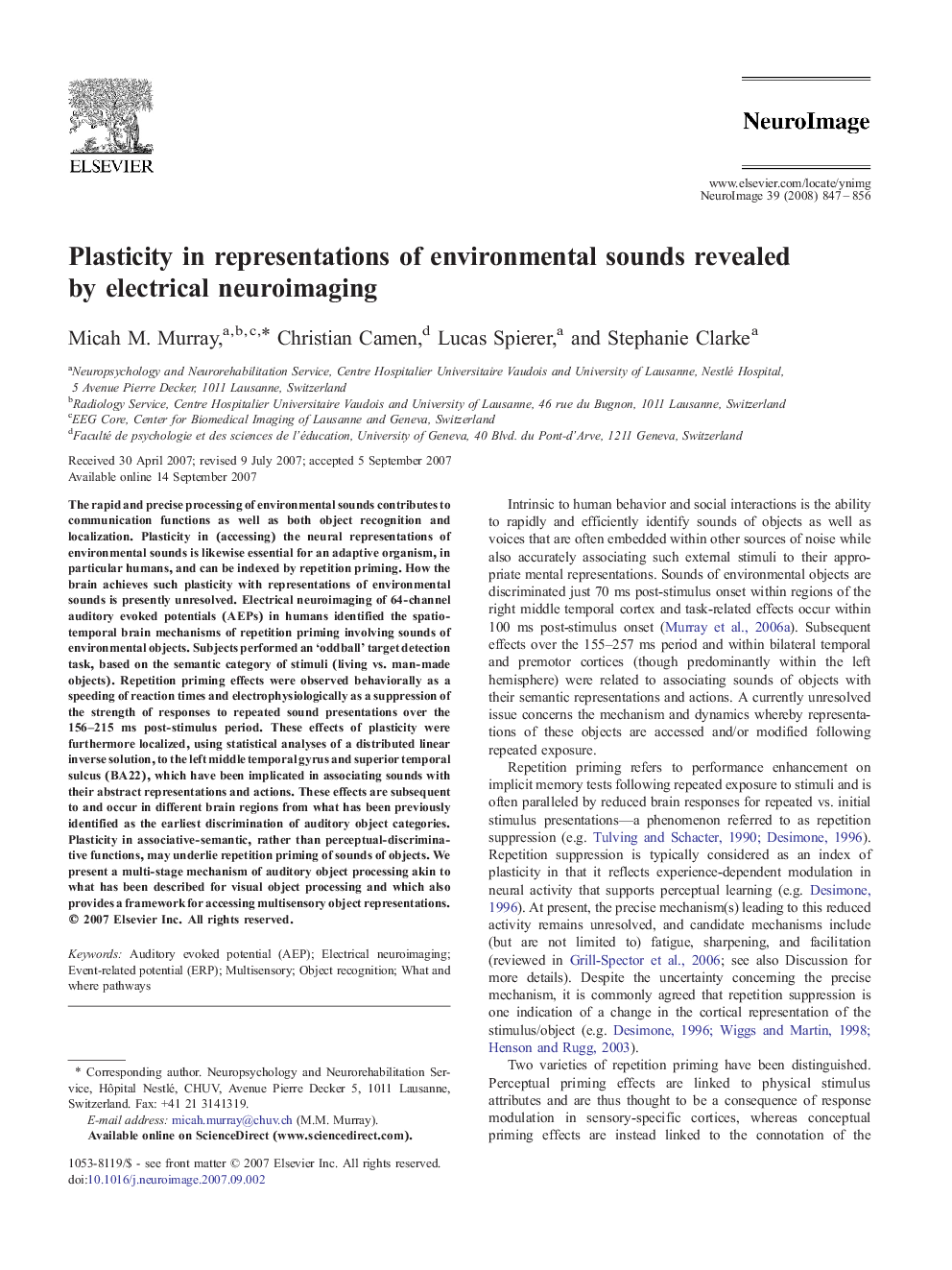| Article ID | Journal | Published Year | Pages | File Type |
|---|---|---|---|---|
| 3073280 | NeuroImage | 2008 | 10 Pages |
The rapid and precise processing of environmental sounds contributes to communication functions as well as both object recognition and localization. Plasticity in (accessing) the neural representations of environmental sounds is likewise essential for an adaptive organism, in particular humans, and can be indexed by repetition priming. How the brain achieves such plasticity with representations of environmental sounds is presently unresolved. Electrical neuroimaging of 64-channel auditory evoked potentials (AEPs) in humans identified the spatio-temporal brain mechanisms of repetition priming involving sounds of environmental objects. Subjects performed an ‘oddball’ target detection task, based on the semantic category of stimuli (living vs. man-made objects). Repetition priming effects were observed behaviorally as a speeding of reaction times and electrophysiologically as a suppression of the strength of responses to repeated sound presentations over the 156–215 ms post-stimulus period. These effects of plasticity were furthermore localized, using statistical analyses of a distributed linear inverse solution, to the left middle temporal gyrus and superior temporal sulcus (BA22), which have been implicated in associating sounds with their abstract representations and actions. These effects are subsequent to and occur in different brain regions from what has been previously identified as the earliest discrimination of auditory object categories. Plasticity in associative-semantic, rather than perceptual-discriminative functions, may underlie repetition priming of sounds of objects. We present a multi-stage mechanism of auditory object processing akin to what has been described for visual object processing and which also provides a framework for accessing multisensory object representations.
